How to Hold the Leash –yeah, really
You may be laughing right now thinking, “of COURSE I know how to hold a leash, I do it every day!” Well, just because you do it everyday, doesn’t mean you do it right (there are lots of non-dog examples of this… use your imagination).
Improperly holding a leash can result in broken fingers, loose dogs, lost dogs, hurt dogs, scraped knees, busted chins, broken wrists, lacerations, rope burns, and serious bruising. Not to mention the bruised and broken ego after the embarrassment of being pulled over by your little dog or dragged around by your large dog.
Proper leash handling is, in my opinion, a two part equation. The first part is gripping the leash correctly in your hand and the second part is positioning your arm to maximize your strength.
Most people make two big mistakes when handling their dog’s leash. First, they will either wrap the leash around their hand over and over and over again to “get a good grip” or they will slip their hand through the handle and then wrap it around their hand/wrist. Secondly, they will walk the dog with their arm dangling by their side or fully extended forward. Sound familiar?
These may not seem like mistakes to you but they are both actually pretty dangerous. If you have your dog’s leash wrapped around your hand or wrist and your dog lunges and pulls, you seriously risk breaking the bones in your hand/wrist (if your dog is large enough or strong enough) or damaging the tendons/ligaments. It is also dangerous because the leash can tighten around your hand/wrist to the point that you cannot easily let go of the leash if you need to in order to prevent injury.
How you position your arm while holding your leash is really the make or break part of whether you will stay on your feet or will face plant on the ground if your dog pulls. It’s really quite simple physics. If you hold the leash with your hand just casually at your side, when your dog pulls, your arm will fly forward and your shoulder will be hit with a downward/forward force. Since your shoulder is above your center of gravity, it is easy to topple you over with the forward/downward force of the dog pulling. What is interesting is that if you aren’t paying attention, even a small dog can topple a person with the right timing because of the physics–especially if they have ample forward momentum adding to the force your shoulder feels.
So, how should you hold a leash? Well there are two grip options that I use and suggest. One accommodates using a clicker and the other doesn’t.
How to grip the leash with a clicker
Step 1: Put your four fingers through the handle of the leash while keeping your fingers outstretched.
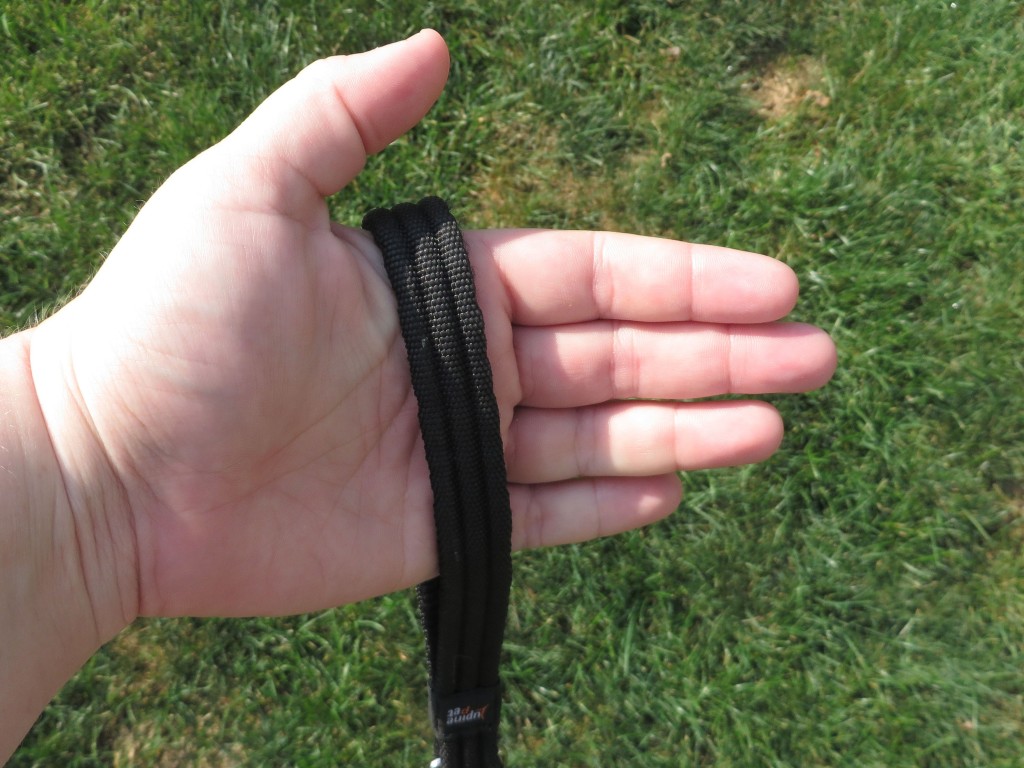
Step 2. Take the leash and put it between your index and middle finger, going from the palm towards the back of your hand.
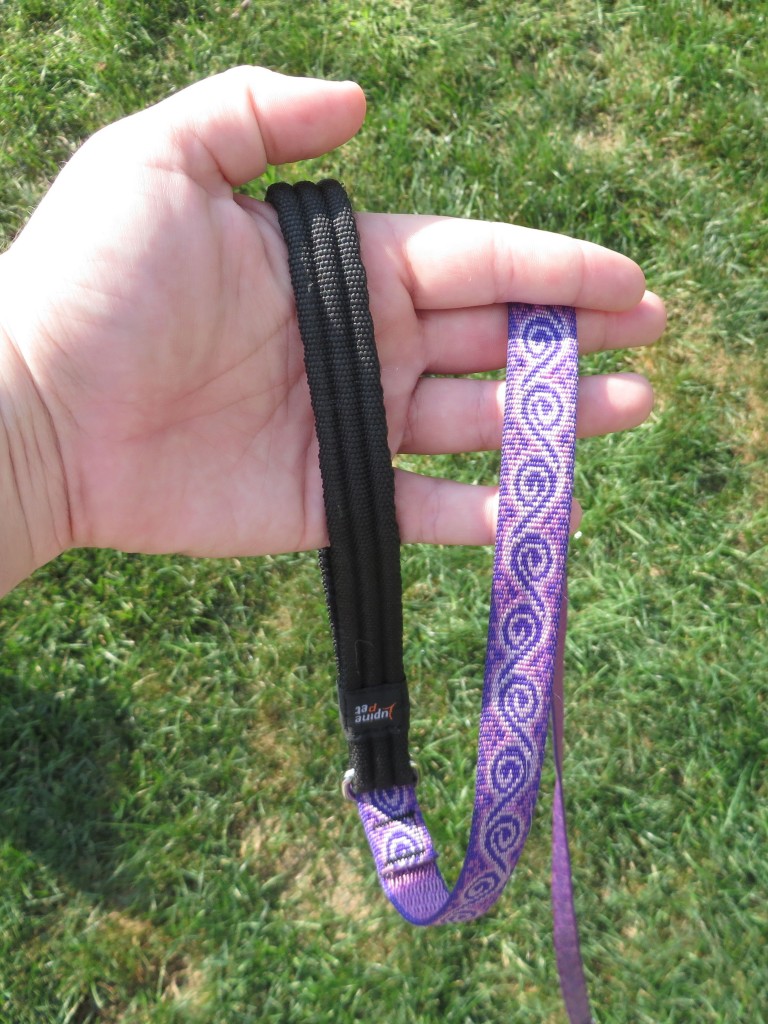
Step 3. Take the length of leash from the back of your hand and flip it over your index finger (so essentially you loop it around your index finger).
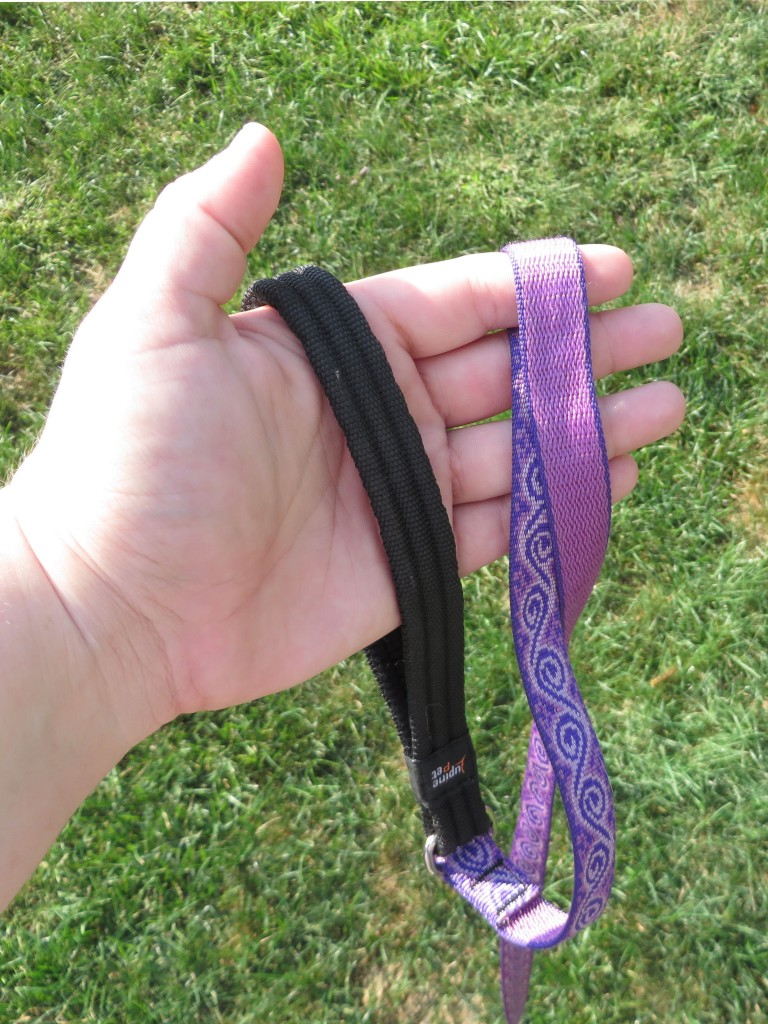
Step 4. Move the looped leash towards the base of your index finger and begin to grip the leash and handle with your fist.
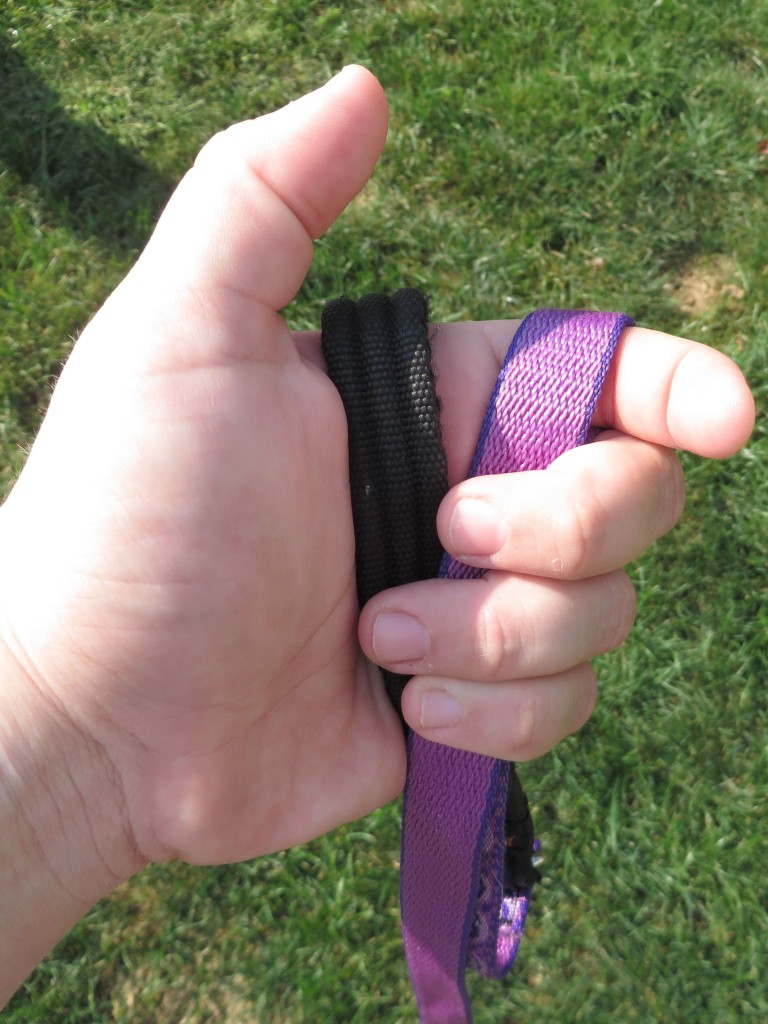
Step 5. Once you have a tight and comfortable grip on the leash, you can place the clicker on top of your index finger and under your thumb, ready to click away.
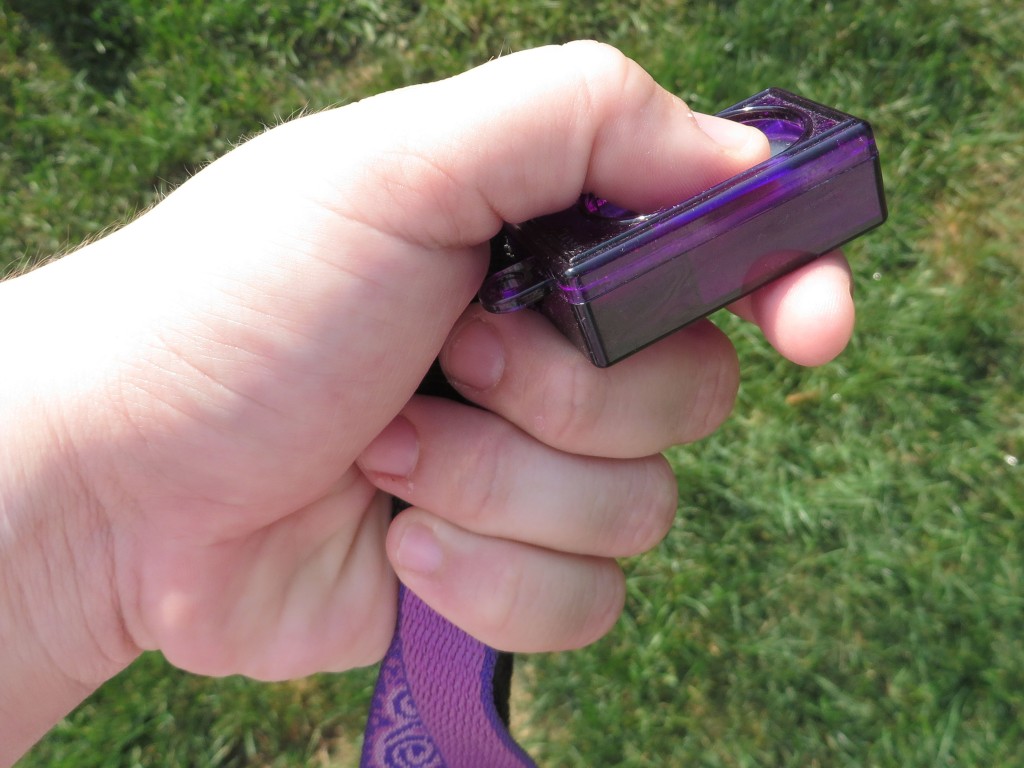
And you are then ready to go with a grip that allows you have a very strong hold on the leash (using physics to your advantage) while also being able to drop the leash if the situation warrants that.
How to hold a leash without a clicker
Step 1: Put your four fingers through the handle of the leash while keeping your fingers outstretched.

Step 2: Take the leash slack and loop it around your thumb in a counterclockwise motion (so from between thumb and index finger and then around the back of your thumb).
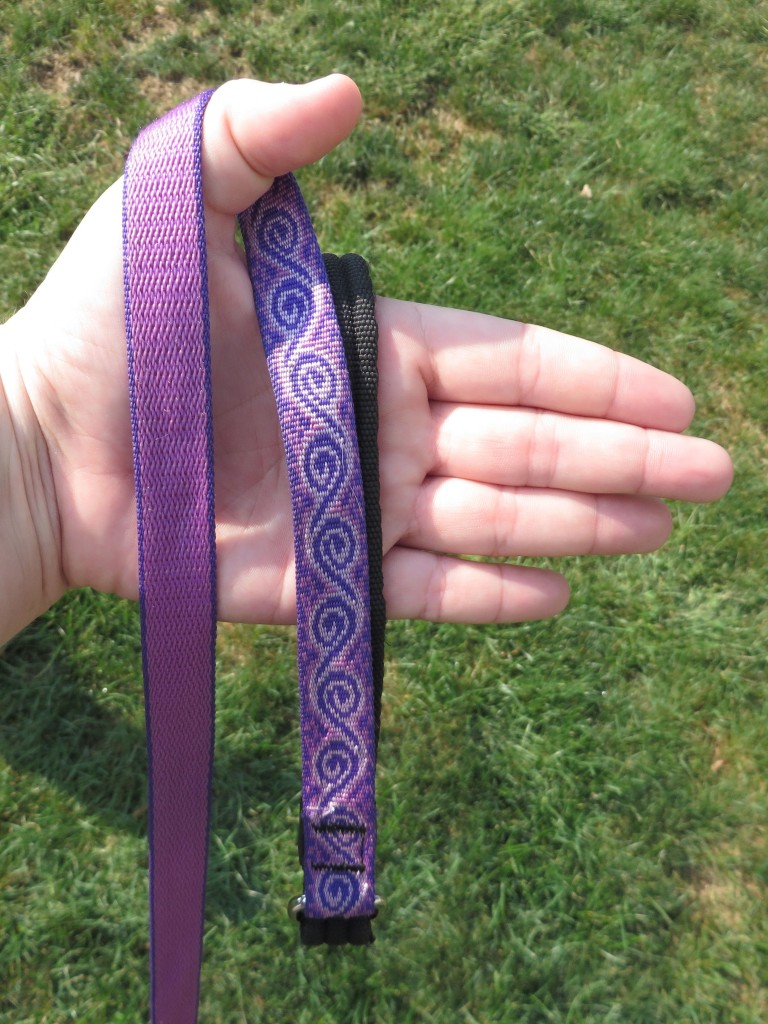
Step 3: Pull both parts of the leash and the handle together and hold tightly.
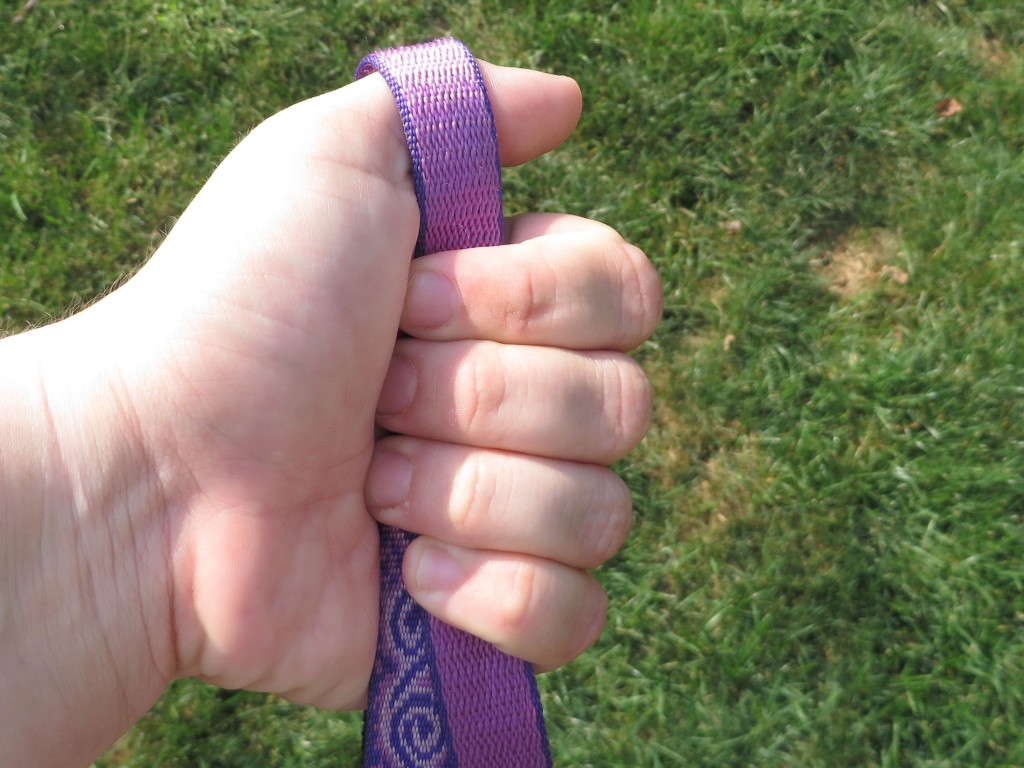
And there you have it, the second grip that I will use. Again, this uses physics to make it incredibly hard for a dog to pull the leash out of your hands but also makes it very easy for you to drop the leash should you need to.
How to position your arm to maximize your strength
The whole idea behind this is to make sure that you keep your hand braced to the center of your body to change the point of force from above your center of gravity to your center of gravity. This will help you stay on your feet and not being pulled over. The bend in your arm also changes how your body can absorb the force of the pull.
With your hand properly gripping the leash, you will place your hand on your abdomen–exactly where depends on your dog’s size/shape–but typically I have my hand a little above my navel but it will sit lower when handling particularly large/strong dogs.
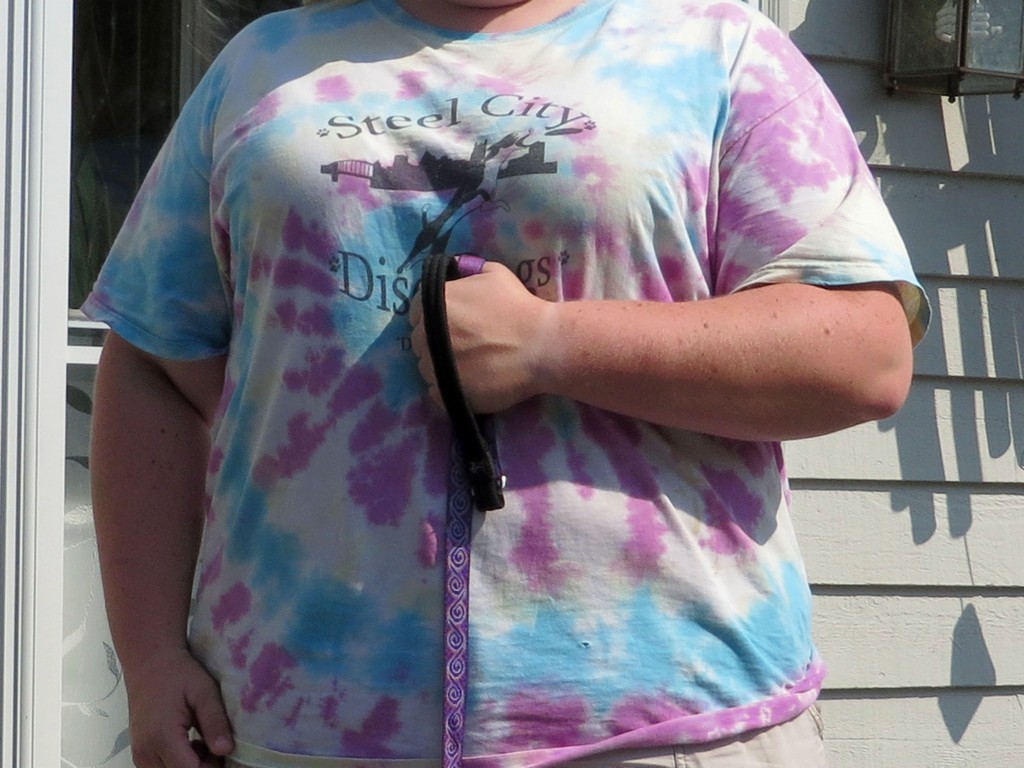
I will also use a second hand on the leash if I’m handling a larger or more powerful dog–thought truth be told, it’s rare that the single handed grip isn’t enough for me to safely control even the largest of dogs.
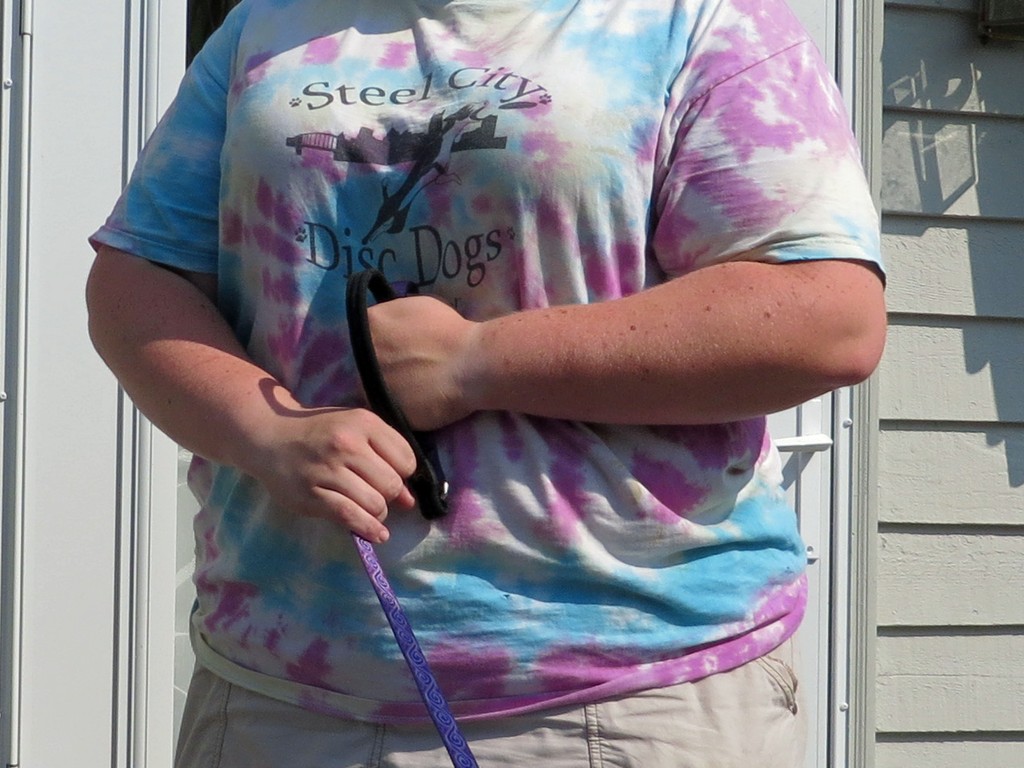
So, there you have it, the two best grips on a leash to make sure your dog stays secure and your hand/wrist stays uninjured and the best arm position to prevent face-planting or being dragged around.

That is interesting. I do it similar, but different, by putting only my thumb through the loop of the leash and holding onto it that way.
Do you then wrap the slack of the leash around your thumb as well? It sounds like that uses the same general principle as my grips and would result in an equally good grip on the leash. But for me, that way feels too bulky in my hand and a bit uncomfortable on my thumb. I rarely use the thumb grip that i mention because i’m so used to having a clicker in my hand that the other grip just feels more normal since I use it most often.
I also loop over my thumb. The slack is held in the palm by my fingers. Using this method allows me a firm comfortable grip, but if necessary for safety reasons, I can drop the leash quickly and easily. The clicker fits nicely in my palm right at my thumb. This is sometimes known as “cock and lock” — many working K-9 handlers use this particular leash hold. I think how to hold the leash is really important!!! Great post!!!